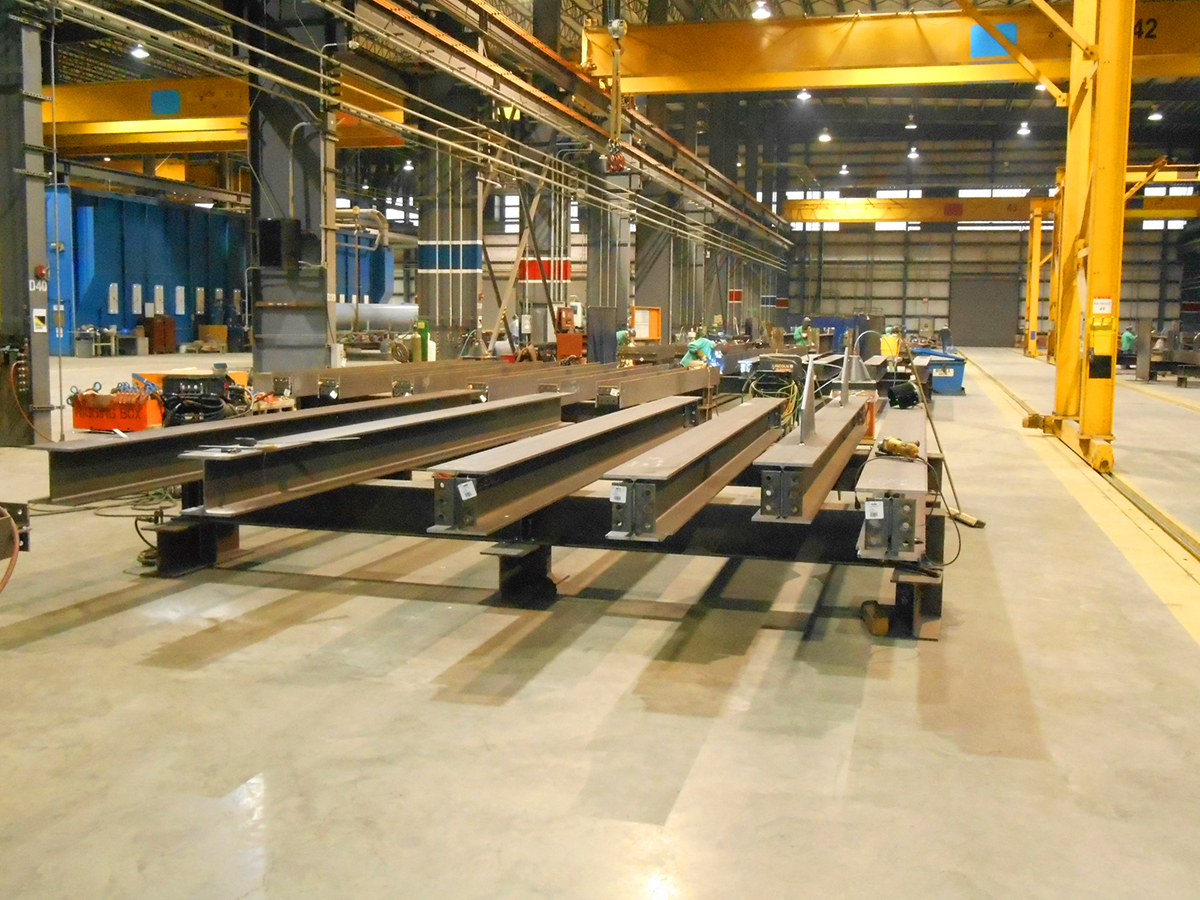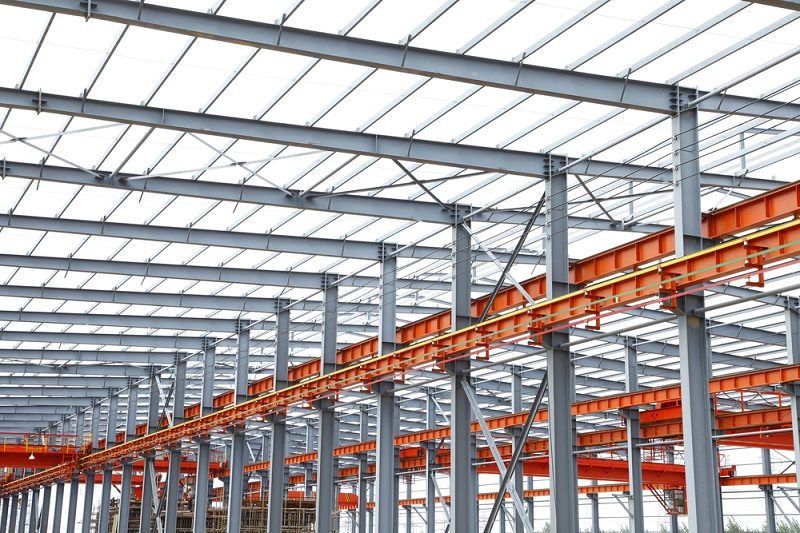Comprehensive Steel Fixing Services for Construction Projects
Comprehensive Steel Fixing Services for Construction Projects
Blog Article
Comprehensive Analysis of Cutting-Edge Techniques in Steel Manufacture Market
As the steel fabrication sector proceeds to advance, the combination of sophisticated strategies has actually become important for staying affordable and satisfying the demands of contemporary manufacturing criteria. From laser cutting innovations to the utilization of robotics and 3D printing in steel production, the landscape of construction strategies is quickly changing. With each advancement bringing its own collection of difficulties and advantages, a detailed evaluation of these techniques is extremely important for companies intending to streamline their processes, boost accuracy, and eventually, boost the quality of their steel construction result. In this dynamic market where technology plays a pivotal duty, comprehending the subtleties of these advanced methods is not simply an option but a requirement for those aiming to forge in advance in the ever-evolving globe of steel construction.
Laser Cutting Developments
In the world of steel fabrication, laser reducing advancements have actually revolutionized the precision and performance of steel shaping procedures. By taking advantage of the power of focused laser beam of lights, makers can now accomplish unequaled degrees of accuracy when cutting through numerous kinds of steels. This innovation allows elaborate designs to be executed with marginal product waste, making it an affordable solution for sectors requiring high precision parts.
Among the essential advantages of laser cutting is its capacity to manage a broad range of products, including stainless steel, light weight aluminum, and carbon steel, with simplicity. The process generates clean, burr-free sides, getting rid of the need for added completing steps. The non-contact nature of laser reducing decreases the risk of product contamination, resulting in greater high quality end items.
Additionally, laser reducing devices can be configured to make swift, accurate cuts, dramatically minimizing manufacturing time compared to typical cutting techniques. This rate and accuracy make laser reducing especially suitable for mass production settings where effectiveness is extremely important. As modern technology proceeds to development, laser cutting is positioned to play a significantly important role in the steel construction sector.

CNC Machining Innovations
The advancement of CNC machining innovations has ushered in a new era of accuracy and efficiency in the steel construction market. Computer System Numerical Control (CNC) machines have transformed steel fabrication by providing unrivaled precision and repeatability in the manufacturing process. metal fabrication melbourne. Among the vital innovations in CNC machining is the assimilation of advanced software program systems that enable real-time tracking and adjustments, bring about boosted performance and quality assurance
In addition, the development of multi-axis CNC machines has actually enabled the manufacture of complex steel elements with complex styles that were previously testing to create. These machines can do a variety of machining operations, including milling, drilling, turning, and grinding, all with high degrees of accuracy.
Additionally, the consolidation of automation and robotics in CNC machining has streamlined production procedures, minimized lead times, and minimized the margin of mistake. This assimilation of innovative innovations not only enhances effectiveness however also makes sure consistent high quality across all made steel components. Finally, CNC machining advancements remain to drive innovations in the steel manufacture sector, setting brand-new requirements for accuracy and efficiency.
Automated Welding Technologies
Automated welding technologies have actually transformed the steel fabrication sector, improving performance and precision in the welding procedure. These innovative technologies use computer-controlled systems to automate the welding process, causing greater efficiency degrees and improved weld top quality. One of the crucial benefits of automated welding is the capability to execute complicated welds with constant accuracy, lowering the possibility of mistakes and rework.
Robotic welding systems go to the forefront of automated welding innovations, offering unmatched speed and accuracy. These systems can handle a large array of welding tasks, from basic to detailed, with ease (steel fabricators melbourne). By making use of advanced sensors and software application, robot welders can adapt to variations in material and joint geometry, making sure an attire and reputable weld
In addition, automated welding technologies enhance work environment safety and security by minimizing the exposure of human welders to dangerous fumes and intense warm. As the steel construction market remains to advance, including automated welding technologies will be important for business wanting to stay competitive and fulfill the expanding needs for high-grade bonded items.
Robotics Assimilation in Manufacture
Making use of robot systems in construction processes has become a crucial technique for improving effectiveness and precision in modern manufacturing settings. Robotics assimilation in steel fabrication offers a myriad of benefits, including boosted productivity, boosted quality assurance, and boosted precaution. These innovative robot systems are furnished with advanced sensors and shows capacities, enabling them to perform intricate jobs with a high level of precision and repeatability.
One of the key benefits of robotics combination in steel fabrication is the capacity to automate repeated tasks, such as material handling, cutting, welding, and setting up procedures. This not only quickens production cycles but additionally decreases the risk of human mistake, bring about greater overall item quality. In addition, robots can run 24/7, substantially boosting manufacturing output and meeting limited project target dates.

3D Printing in Steel Production
Having actually transformed the steel fabrication sector through robotics integration, the expanding exploration of 3D printing in steel manufacturing is positioned to more breakthrough the realm of modern manufacturing methods. 3D printing, additionally referred to as additive production, provides unprecedented design flexibility and intricacy, making it possible for the production of detailed steel structures that were previously unattainable through traditional manufacturing techniques. By utilizing computer-aided style (CAD) software program, suppliers can specifically regulate the layer-by-layer deposition of steel product, causing get rid of boosted capabilities and geometries.
Among the vital benefits of 3D printing in steel production is its capability to minimize material waste considerably. Unlike subtractive manufacturing processes where excess product is cut away, 3D printing just utilizes the required amount of steel required for the last component. This effectiveness not only leads to set you back savings additional resources yet likewise lines up with sustainable production techniques by lessening environmental impact.
Moreover, 3D printing enables rapid prototyping and customization, permitting for the manufacturing of small sets of complicated steel components with brief preparations. As the innovation remains to mature and come to be extra easily accessible, its integration right into mainstream steel construction processes is anticipated to drive development and efficiency throughout the sector.
Verdict
To conclude, the steel fabrication industry has seen considerable improvements in methods such as laser cutting, CNC machining, automated welding, robotics assimilation, and 3D printing. These sophisticated image source technologies have transformed the way steel products are manufactured, resulting in enhanced efficiency, cost-effectiveness, and precision. Continued investment in these cutting-edge strategies is critical for the industry to remain competitive and fulfill the demands of modern manufacturing processes.
As the steel construction sector proceeds to evolve, the integration of cutting-edge strategies has actually ended up being essential for remaining affordable and satisfying the demands of contemporary manufacturing standards.One of the vital advantages of laser cutting is its ability to take care of a vast variety of materials, consisting of stainless steel, aluminum, and carbon steel, with ease.Automated welding modern technologies have actually transformed the steel fabrication sector, improving efficiency and accuracy in the welding process.Having actually transformed the steel fabrication market via robotics assimilation, the growing expedition of 3D printing in steel production is positioned to additional advance the world of modern production techniques.In final thought, the steel fabrication industry has actually seen considerable advancements in methods such as laser cutting, CNC machining, automated welding, robotics integration, and 3D printing.
Report this page